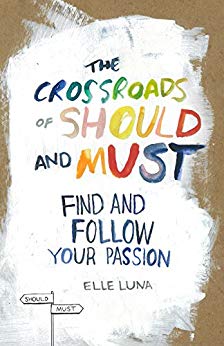I liked this book. It really felt good right now, when I am doing some reinventing and bringing myself back to beginner mind and fresh takes. I'm always buoyed by cute graphics with encouraging words, too, so I enjoyed running across those throughout the book.
Things I particularly liked:
- The examination of job, career, and calling
- The should list and the questions to ask about each of our personal shoulds
- The 10 minute activities and small steps to help you find your must
- The obituary activity
- The fears list activity
Not my favorite stuff:
- I think we need to talk more about fitting your musts into your should world, because for most of us that's how it's going to look. I think most of our paths are going to have our shoulds and our musts walking side-by-side. This was addressed more in the last half of the book, but I felt like it should have been acknowledged earlier. We need to fit our must in with paying bills and meeting our everyday obligations and needs.
- The idea that everyone is born with a calling they just need to find. I think sometimes we realize we want a calling or passion, and we can go out and experiment and create one. But it doesn't have to be some big birthright sort of thing. It's okay to develop a calling in your 90s if that's where you find yourself, and if it's not something you were interested in during childhood, that's just fine.
- Not the fault of the book or anything about the writing, but this didn't work for me as an ebook. This book is meant to be read in full color.
Overall, I liked this. It returned my focus to what I want to be doing. It reminded me that there are things I can do even on days when I'm exhausted, depressed, in pain, whatever. It made me want to get up and do things, and that's the thing I loved the most.



